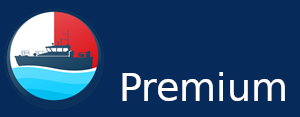Researchers have observed an unexpectedly high frequency of towering waves in the German North Sea, particularly near the island of Norderney. These extreme waves pose a significant risk to maritime infrastructure, including ships, offshore wind farms, and research platforms. In response, artificial intelligence (AI) is being developed to enhance predictive capabilities.
Scientific Findings and Classification of Extreme Waves
According to the study "Freak Waves II," conducted by the Federal Maritime and Hydrographic Agency of Germany (BSH), these waves occur more frequently in the southern North Sea than previously theorized. The research highlights that such extreme waves, defined as being at least twice the height of the mean wave crest in a given sea state, have been repeatedly recorded. While the North Atlantic remains the primary hotspot for extreme waves, the North Sea also experiences significant occurrences. Despite their presence, the BSH confirms no direct threats to coastal tourism, as these waves break before reaching shore. However, their potential impact on vessels and offshore infrastructure remains a serious concern.
AI-Powered Prediction and Future Outlook
In an effort to mitigate risks, researchers have developed machine learning models to predict the probability of extreme wave formation within a ten-minute timeframe. Preliminary results indicate promising accuracy, though full implementation remains at least three years away. Further refinement of data sets and a deeper understanding of the underlying wave mechanics are necessary before deployment.
Historical records show that extreme waves have contributed to numerous maritime disasters. Once considered maritime folklore, their existence was confirmed with the documentation of the Draupner Wave in 1995, which reached 25.6 meters in height. Such waves, often referred to as "monster waves" or "Kaventsmänner" among seafarers, are formed by wind interactions and complex wave dynamics. Their steep, abrupt formation makes them particularly dangerous, as evidenced by the destruction of an offshore research platform near Borkum during Hurricane Xaver in 2013. Tragically, even experienced DGzRS rescue crews have lost their lives to these formidable sea phenomena.
With the advancement of AI-driven forecasting models, maritime safety measures are expected to improve significantly, providing better protection for vessels and offshore installations against these unpredictable giants of the sea.


